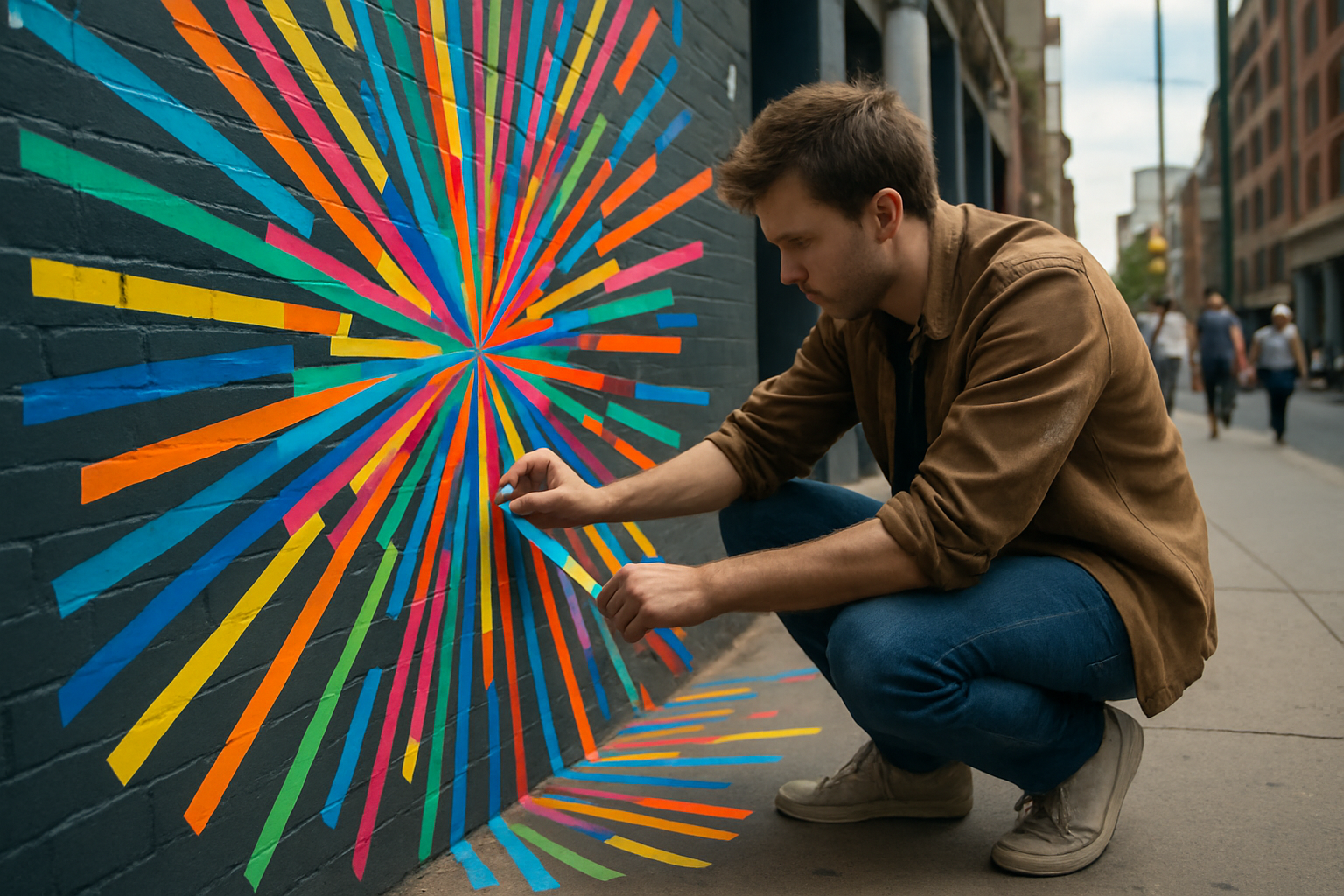The Curious Resurgence of Tape Art in Public Spaces
In a world saturated with digital media, an unexpected analog art form is making waves across urban landscapes. Tape art, a medium that transforms ordinary adhesive tape into captivating visual narratives, is experiencing a renaissance in public spaces worldwide. This unconventional art form challenges our perceptions of materials and pushes the boundaries of creative expression.

From Guerrilla Art to Mainstream Recognition
Initially viewed as a form of guerrilla art, tape installations often appeared unexpectedly in urban environments, transforming mundane spaces into temporary galleries. As the medium gained traction, it began to attract attention from art institutions and public commissions. The transition from underground movement to recognized art form was marked by high-profile installations in museums and galleries worldwide, including the Tate Modern in London and the Museum of Modern Art in New York.
The Technical Mastery Behind the Adhesive
Contrary to its seemingly simple nature, tape art requires a high level of technical skill and creativity. Artists must contend with the limitations of their chosen medium, working with various types of tape to achieve different textures, colors, and effects. The process often involves meticulous planning and execution, with some large-scale installations taking weeks or even months to complete. The ephemeral nature of tape art also presents unique challenges, requiring artists to consider factors such as weather conditions and surface textures in their creative process.
Environmental Considerations and Sustainability
As environmental concerns take center stage in the art world, tape artists are increasingly focusing on sustainable practices. Many have shifted towards using biodegradable or recyclable tapes, while others incorporate themes of ecology and conservation into their works. This eco-conscious approach has not only aligned the medium with contemporary values but has also opened up new avenues for artistic exploration and public engagement.
The Interactive Element: Engaging the Public
One of the most compelling aspects of tape art is its ability to transform public spaces and engage viewers in unexpected ways. Unlike traditional gallery settings, tape installations often invite interaction, encouraging passersby to become part of the artwork. This participatory element has made tape art a powerful tool for community building and urban revitalization projects. Cities around the world are now commissioning tape artists to breathe new life into neglected spaces, turning blank walls and forgotten corners into vibrant, thought-provoking installations.
The Digital Amplification of an Analog Art Form
Ironically, the rise of social media has played a significant role in the resurgence of tape art. The visual impact and often temporary nature of these installations make them ideal subjects for sharing on platforms like Instagram and TikTok. This digital exposure has helped tape artists reach global audiences, fostering a community of creators and admirers that extends far beyond physical locations. The contrast between the analog medium and its digital dissemination creates a unique dialogue about art in the modern age.
Challenges and Controversies
Despite its growing popularity, tape art is not without its controversies. Questions of permanence, property rights, and the line between art and vandalism continue to spark debates. Some critics argue that the temporary nature of tape installations diminishes their artistic value, while others see it as a refreshing challenge to traditional notions of art collection and preservation. These ongoing discussions contribute to the dynamic nature of the medium and its evolving place in the contemporary art world.
The Future of Tape Art: Innovation and Expansion
As tape art continues to evolve, artists are pushing the boundaries of the medium in exciting new directions. Collaborations with technology, such as incorporating LED lights or augmented reality elements, are expanding the possibilities of what can be achieved with adhesive tape. Additionally, the use of tape in performance art and interactive installations is opening up new avenues for creative expression and audience engagement.
Conclusion: Sticking to the Unexpected
The resurgence of tape art in public spaces represents a fascinating intersection of accessibility, creativity, and urban transformation. As this medium continues to gain recognition and evolve, it challenges us to reconsider our relationship with everyday materials and the spaces we inhabit. In a world increasingly dominated by digital experiences, tape art offers a tangible, often whimsical reminder of the power of analog creativity and the unexpected beauty that can emerge from the simplest of materials.





